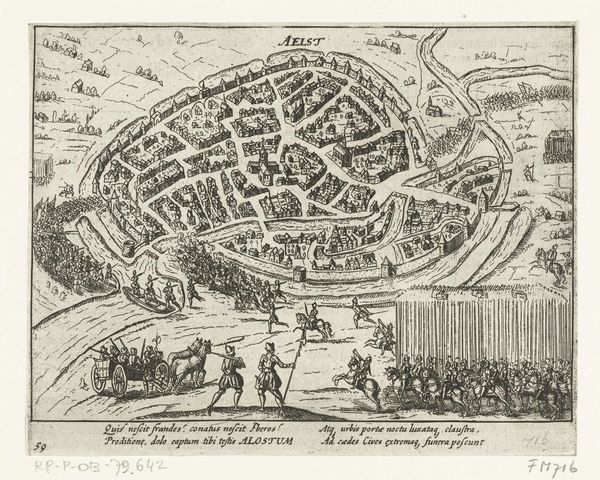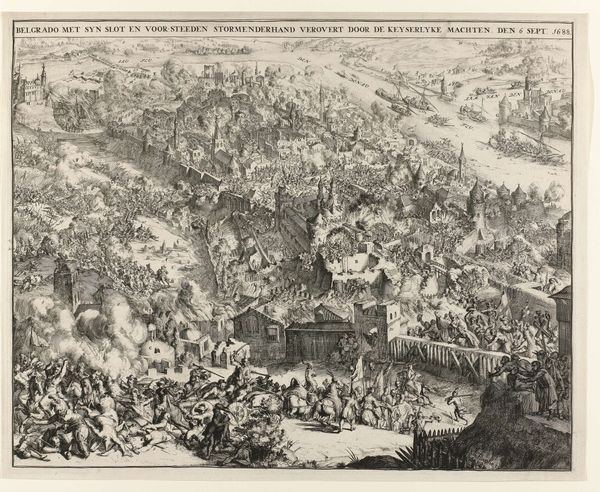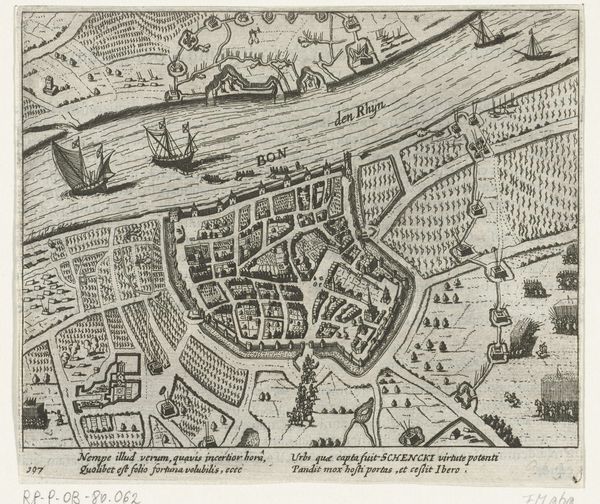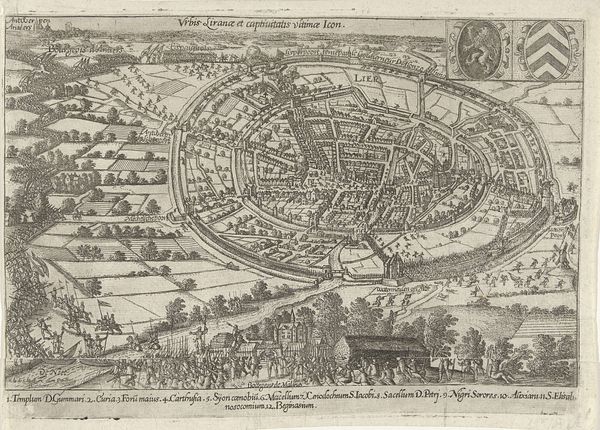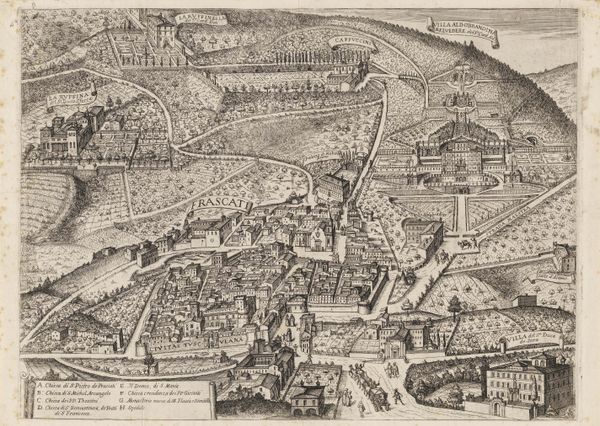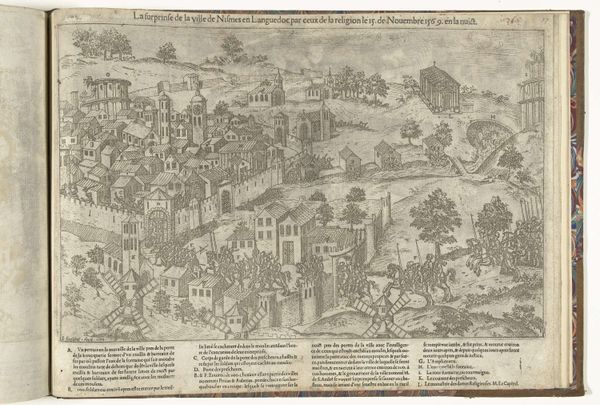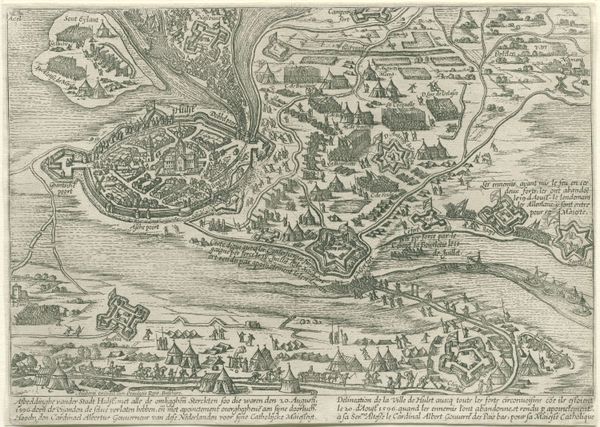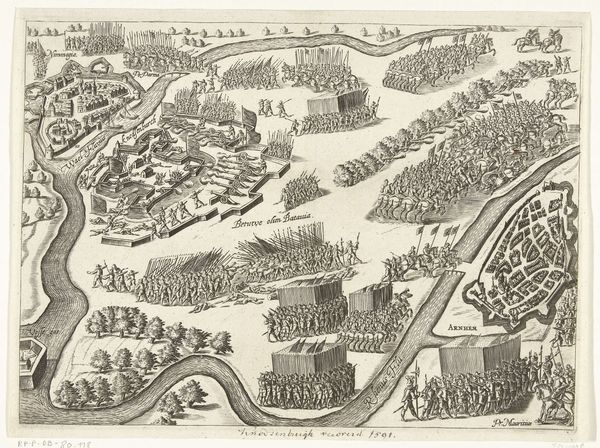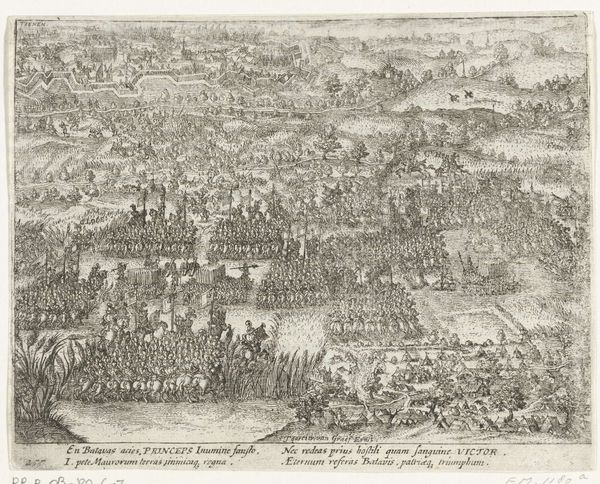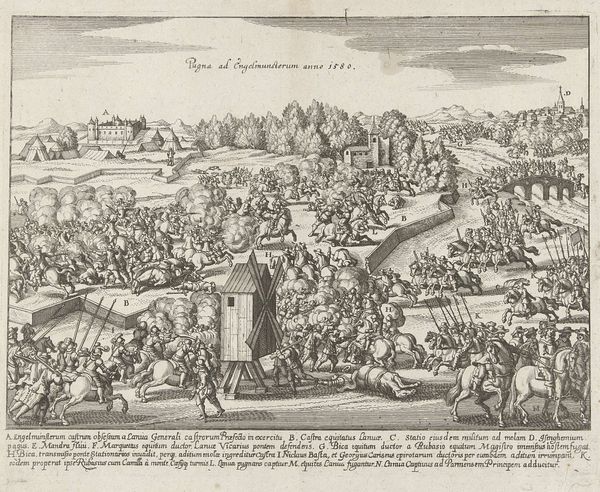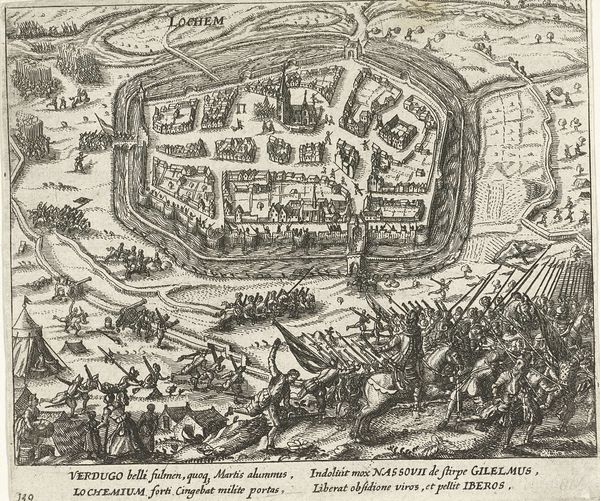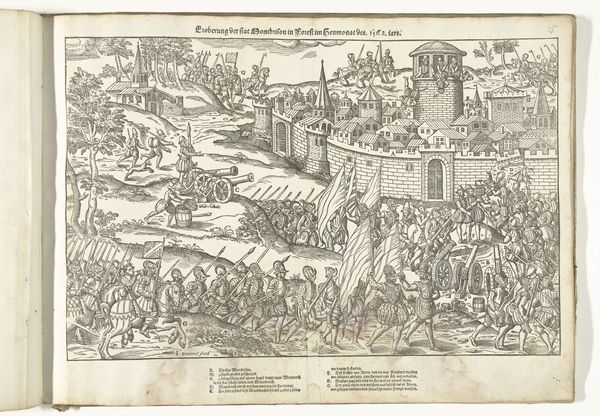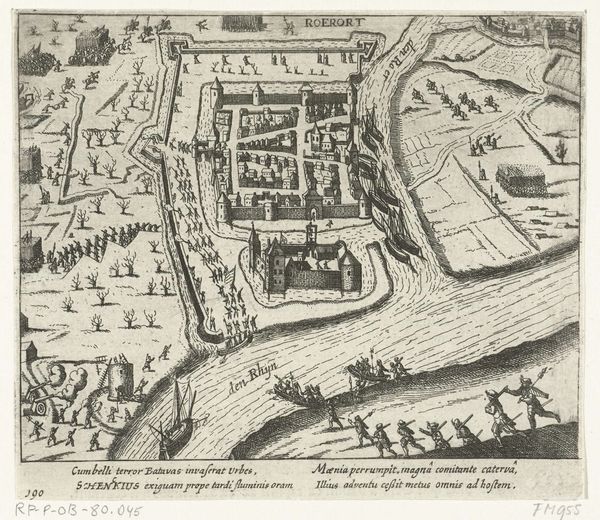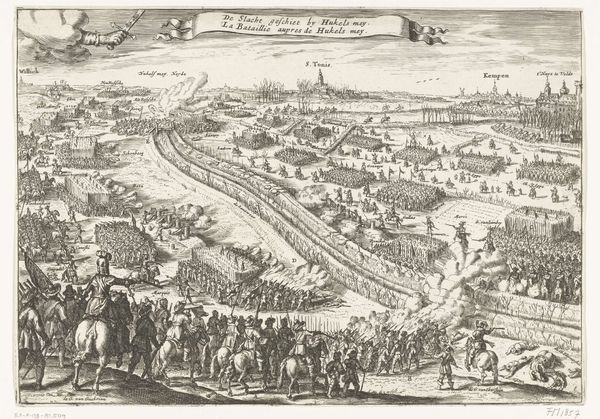
print, engraving
#
narrative-art
# print
#
11_renaissance
#
cityscape
#
history-painting
#
engraving
Dimensions: height 375 mm, width 490 mm
Copyright: Rijks Museum: Open Domain
Curator: This print, titled "Beleg van Saint-Jean d'Angély, 1569," was created around 1570 by Jean Perrissin. Immediately, the dense detail overwhelms the eye. Editor: Yes, it's quite striking how much information is packed into the engraving. There’s almost a bird’s-eye view, presenting us with a chaotic yet ordered depiction of siege warfare. I can sense the frenetic energy and violence implicit in this scene, as Saint-Jean d'Angély gets battered into submission. This happened amid a fraught power struggle, the French Wars of Religion that saw Catholics and Protestants clashing violently for dominance. Curator: Exactly. Perrissin’s print documents the siege of Saint-Jean d'Angély by Charles IX during that conflict, the date 1569 detailed in the image's inscription at the top. Notice the systematic layout - we have the besieging forces in the foreground, and the besieged city behind a narrow trench. I can tell by its detail, with tiny figures actively engaged in fighting. Do you agree that composition serves a propagandistic purpose? Editor: In a sense, yes. From a formalist perspective, the use of line, hatching, and stippling to create tone is superb. But I think that any implied statement or narrative purpose remains rooted in aesthetics - consider how Perrissin uses perspectival recession and elevation to offer us both close-up scenes of battle but also a complete overview, this allows him to give form to the complexity and the scope of this military encounter. The contrast between foreground activity and the more placid cityscape lends to an emotional impact on us today, to view this image. Curator: It’s impossible to detach this from the wider context of religious persecution during that time. This image serves as a testament to that specific power dynamic, and what happens at any point in this timeframe. So many other social and historical issues contribute, especially through identity and ideology, which would come into consideration to discuss at another moment. Editor: I concur; for now, appreciating Perrissin's craftsmanship gives us one lens through which to experience a fragment of history that speaks beyond specific dogmas of the past. Curator: And viewing it intersectionally allows us to ask, “How have the historical and material circumstances surrounding such images influenced contemporary political realities, particularly regarding issues of national and social division?”. Editor: A question for the present! Thank you!
Comments
No comments
Be the first to comment and join the conversation on the ultimate creative platform.
